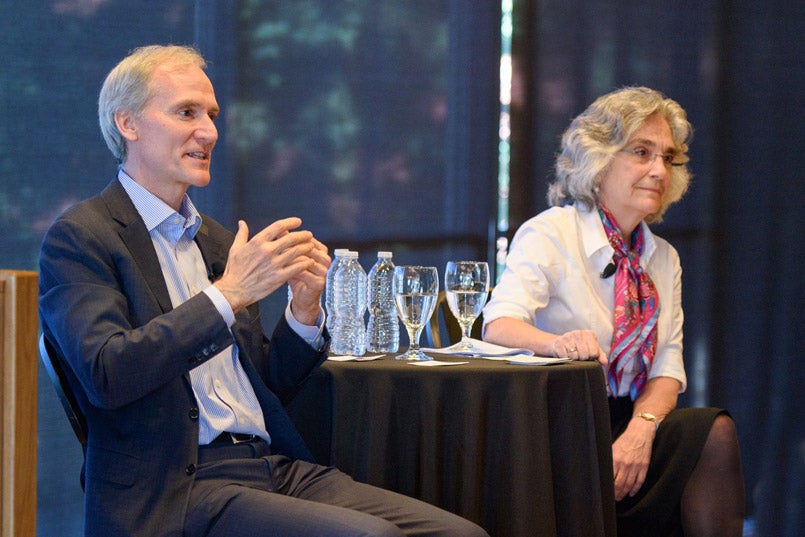April 12, 2018
Thoughts on gun violence
One of the things I reflected about over spring break was how inspired I have been by the participation of high school students across the country and the world who have raised their voices about the all-too-frequent tragedies of gun violence. The shootings that have taken place in recent years, at schools, churches and music venues, have broken our hearts. And we must never forget the gun violence that takes place on a more regular basis in low-income communities and communities of color. All of these shootings are tragic.
In the midst of such pain, I am heartened by the groundswell of energy that was demonstrated during the March for Our Lives on March 24. The young people who joined 800 marches around the globe represented those touched by the full spectrum of gun violence in schools and communities. The participation of young people from all socioeconomic backgrounds, races, ages and ethnicities was a moving testament to the organizers’ commitment to collaborative solutions to ending this senseless violence.
It is my hope that one result of the current advocacy is that government and higher education will work together to advance research on gun violence. Currently scholars at Stanford and other local institutions are studying this issue from a variety of perspectives, including politics, policy and public health. For example, just a few weeks ago, the Stanford School of Medicine hosted a teach-in titled “Gun Violence and Public Health: What We Know.” The teach-in featured Stanford faculty and medical students and other Bay Area experts. Stanford University Communications recently put together a package of stories focused on work being done by Stanford experts.
Preparing for the worst
In the meantime, we cannot look at gun violence as something that happens “out there.” The shooting at YouTube headquarters in San Bruno just last week reminds us that these incidents can happen anytime and anywhere. While we cannot live in fear, it is our responsibility as a university community to prepare to confront a wide range of emergency situations, including gun violence.
To that end, I want to let you know that the Department of Public Safety has created a new training video that describes how to react to an active shooter scenario. There also is a Q&A on the Stanford News website in which Stanford’s Chief of Public Safety Laura Wilson and the university’s Emergency Manager Keith Perry discuss how to prepare for the worst possible scenarios.
I hope you will take time to familiarize yourself with the recommendations in the video and to review the other materials referred to in this note. I also hope you will discuss emergency plans with your residence staff and departments as well as your families.
As part of your planning, I encourage you to update your emergency contact information through Axess. When there is an emergency, and Public Safety needs to provide instructions and direction, you will receive alerts via email and text messages.
The Department of Public Safety recently changed the system used to send alerts. That change will, in turn, change the phone number and email address through which the community receives alerts. The SMS/Text Short Code will be 89361. The email address will be alertsudps@lists.stanford.edu. The phone number will be (650) 725-5555. For more information, visit the Department of Public Safety website.
We also want to remind you that all weapons are prohibited on the Stanford campus. With the exception of sworn law enforcement officials working in that capacity, it is a felony to bring or possess any firearm on any California school campus. If you have questions about this policy, please see page 21 of the university’s 2017 Safety, Security and Fire Report, or contact the Department of Public Safety.
As Chief Wilson says in the Stanford News Q&A, “None of us thinks this is going to happen to us, but we need to have the mindset of ‘what if?’ What if there were an earthquake or a fire? What if there were an active shooter? No matter what type of emergency situation, the important thing is to know where your exit points are and to have a plan.”
I realize that there are no easy solutions to the complex issue of gun violence, but please know that the university takes the issue seriously, and we are doing what we can to prepare for these kinds of emergencies. I am happy to discuss your concerns during my office hours, which are posted and updated on the Student Affairs website.
I wish you a safe, and fulfilling spring quarter.
Best regards,
Susie Brubaker-Cole, PhD
Vice Provost for Student Affairs
